How to Prevent Pest Spread from Neighboring Properties
- Why Pest Control from Neighbors is Important
- Common Pests That Spread Between Properties
- Strategies for Preventing Pest Spread
- The Role of Property Management in Pest Control
- Real-Life Examples of Pest Prevention
Dealing with pests is frustrating, especially when they are coming from neighboring properties. Unfortunately, pests don’t recognize property lines, and infestations can quickly spread from one property to another. Whether you’re dealing with rodents, insects, or larger pests, it’s important to take proactive steps to prevent the spread of pests from neighboring properties. In this article, we’ll explore why it’s important to address this issue, common pests that spread easily, and effective strategies to keep your home pest-free.
1. Why Pest Control from Neighbors is Important
Pests don’t stay confined to one area; they can easily migrate from neighboring properties to yours. This makes it essential to understand the role of surrounding properties in maintaining pest control. If your neighbors have a pest issue and do not address it, it can quickly become your problem too.
For example, rats or mice can travel from house to house through attics, basements, or shared walls. Similarly, insects such as ants, termites, and bed bugs can spread via shared fences, foundations, or even improperly disposed of trash. By addressing pest control issues at your home, you are also contributing to the overall health of your neighborhood.
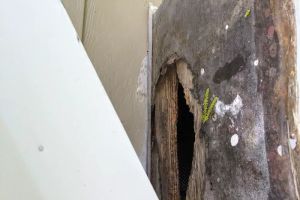
Piedmont Wildlife & Pest Management
RichmondHenrico CountyVirginia
5608 Randall Ave, Richmond, VA 23231, USA
2. Common Pests That Spread Between Properties
Several pests are notorious for spreading from one property to another. Understanding which pests are most likely to invade from neighboring properties can help you focus your prevention efforts. Here are some common pests that spread easily:
- Rodents (Mice and Rats): Rodents are known for their ability to travel between homes. They can enter through small cracks or holes, especially in shared walls or basements, and once inside, they reproduce quickly, creating an infestation.
- Termites: Termites can travel underground from one house to another and invade wooden structures, causing severe damage. These pests often go unnoticed until significant damage has been done.
- Ants: Ants form colonies that can stretch across multiple properties. They follow scent trails that lead them from one house to another in search of food, making them one of the most common pests to spread.
- Bed Bugs: Bed bugs are resilient pests that can easily spread from neighboring properties through shared walls, furniture, or clothing. They are particularly problematic in apartment buildings or multi-unit housing.
- Flies and Mosquitoes: Flies and mosquitoes can travel across yards and between houses, spreading diseases and causing discomfort, especially during warmer months.
3. Strategies for Preventing Pest Spread
Now that we know which pests are most likely to spread, let's focus on practical strategies to prevent them from entering your home. Here are some effective pest prevention methods:
- Seal Entry Points: One of the most important steps in preventing pest entry is sealing any cracks or gaps in your home’s exterior. This includes fixing damaged windows, sealing cracks in walls, and ensuring doors and windows close tightly.
- Proper Waste Management: Ensure that garbage cans are tightly sealed and that trash is disposed of regularly. Pests, especially rodents and insects, are often attracted to food scraps and other waste, making proper waste management crucial in preventing infestations.
- Regular Pest Inspections: Regular inspections of your home’s foundation, attic, and other vulnerable areas can help identify any signs of pest entry early on. If you notice any droppings, holes, or damage, it’s important to address the issue immediately.
- Maintain Your Yard: Keep your yard well-maintained by trimming trees, bushes, and shrubs away from your home. Pests often use these plants as bridges to access your home. Additionally, remove any piles of leaves or wood, as they can attract pests like termites.
- Install Screens and Barriers: Installing screens on windows and vents and using physical barriers, like mesh fencing, can prevent pests from entering your property. For example, a mesh barrier can prevent rodents from traveling between properties through shared areas like fences or crawl spaces.
4. The Role of Property Management in Pest Control
If you live in a multi-unit property or a neighborhood with shared spaces, it’s important to engage with property management or your homeowners association (HOA) to address pest control concerns. Property management companies should take responsibility for ensuring that the building or neighborhood as a whole is pest-free.
In shared housing situations, pest problems can quickly spread if one unit has an infestation and is not addressed. Property managers should be proactive in hiring pest control services, conducting regular inspections, and encouraging tenants to report any signs of pests early on. By working together with your neighbors and property management, you can help reduce the risk of pest spread in your community.
5. Real-Life Examples of Pest Prevention
Let’s consider the case of Jane and Alex, who live in a suburban neighborhood. Last year, they started noticing an increase in rodents around their home. After inspecting the area, they realized that their neighbor’s overgrown yard and unattended trash were attracting pests. They worked with their neighbor to address the issue, including sealing entry points and managing waste more effectively. Since then, they’ve had fewer issues with rodents, and their home remains pest-free.
Similarly, Mark and Susan, who live in an apartment complex, faced an infestation of bed bugs that spread from an adjacent unit. After several complaints and management intervention, the building conducted a thorough pest control treatment throughout the complex, effectively eliminating the problem and preventing further spread. Their experience highlights the importance of addressing pest issues quickly in shared living spaces.
These real-life examples show that preventing pest spread requires cooperation and timely action. Whether it’s working with neighbors or property management, staying proactive can help protect your home from infestations.
If you’re looking for professional pest control services to prevent pest spread from neighboring properties, visit PestControlHub to find the best products and services for your home. We offer expert recommendations to help you keep your property pest-free and secure.


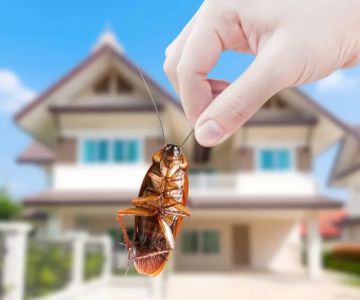

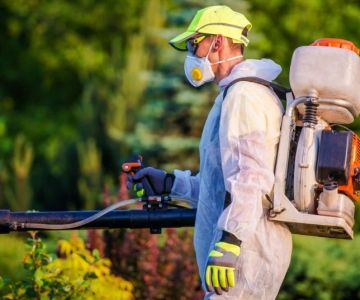

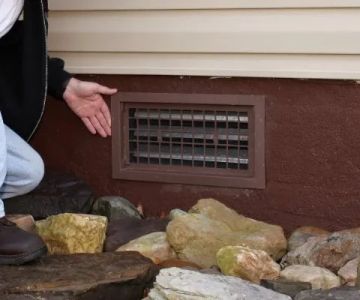
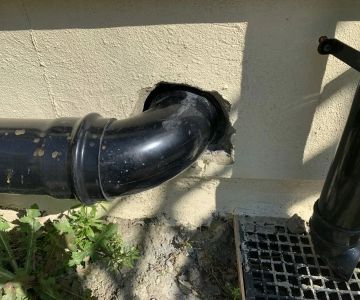
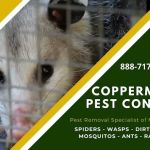 Coppermines Pest Control0.0 (0 reviews)
Coppermines Pest Control0.0 (0 reviews) Assure Pest Services5.0 (17 reviews)
Assure Pest Services5.0 (17 reviews) Reliable Exterminators Inc4.0 (164 reviews)
Reliable Exterminators Inc4.0 (164 reviews)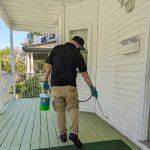 Gaia Pest Control5.0 (151 reviews)
Gaia Pest Control5.0 (151 reviews) Smitter Pest Control Co4.0 (117 reviews)
Smitter Pest Control Co4.0 (117 reviews) R.J.'s Integrated Pest Management5.0 (26 reviews)
R.J.'s Integrated Pest Management5.0 (26 reviews) How to Use Low-Toxic Sprays Safely
How to Use Low-Toxic Sprays Safely How to Use Low-Toxicity Sprays in Sensitive Areas – Safe Pest Control Solutions
How to Use Low-Toxicity Sprays in Sensitive Areas – Safe Pest Control Solutions How to Predict Which Pests Will Invade Next – Smart Pest Forecasting for the U.S.
How to Predict Which Pests Will Invade Next – Smart Pest Forecasting for the U.S.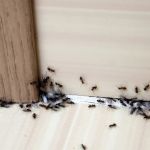 How to Make Your Home Less Attractive to Pests – Simple Tips to Protect Your Home
How to Make Your Home Less Attractive to Pests – Simple Tips to Protect Your Home How to Prevent Pest Migration Between Buildings | Pest Control Tips
How to Prevent Pest Migration Between Buildings | Pest Control Tips How to Monitor Pest Pressure in Foundation Footprint: A Complete Guide
How to Monitor Pest Pressure in Foundation Footprint: A Complete Guide